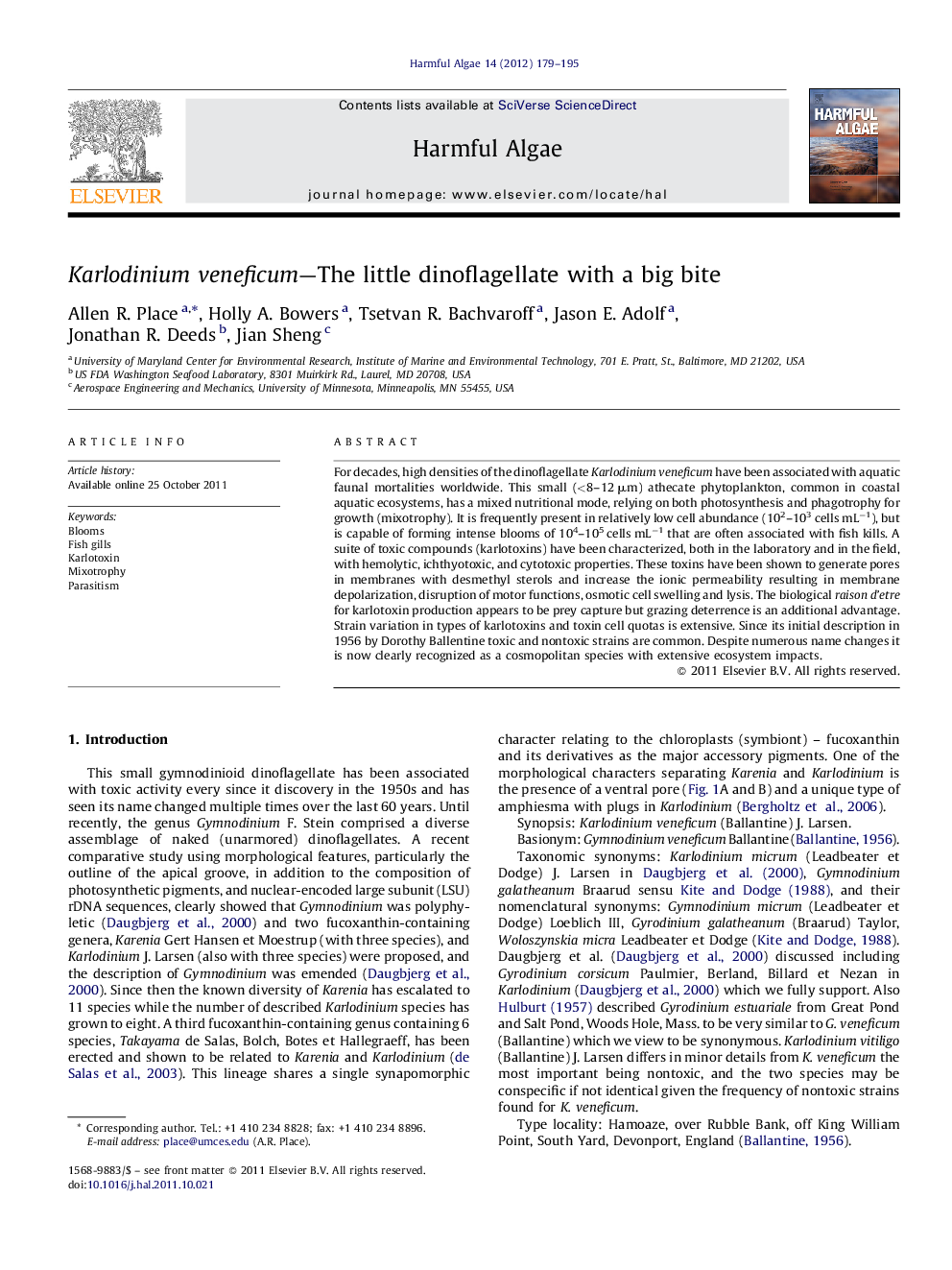| کد مقاله | کد نشریه | سال انتشار | مقاله انگلیسی | نسخه تمام متن |
|---|---|---|---|---|
| 4545638 | 1626956 | 2012 | 17 صفحه PDF | دانلود رایگان |

For decades, high densities of the dinoflagellate Karlodinium veneficum have been associated with aquatic faunal mortalities worldwide. This small (<8–12 μm) athecate phytoplankton, common in coastal aquatic ecosystems, has a mixed nutritional mode, relying on both photosynthesis and phagotrophy for growth (mixotrophy). It is frequently present in relatively low cell abundance (102–103 cells mL−1), but is capable of forming intense blooms of 104–105 cells mL−1 that are often associated with fish kills. A suite of toxic compounds (karlotoxins) have been characterized, both in the laboratory and in the field, with hemolytic, ichthyotoxic, and cytotoxic properties. These toxins have been shown to generate pores in membranes with desmethyl sterols and increase the ionic permeability resulting in membrane depolarization, disruption of motor functions, osmotic cell swelling and lysis. The biological raison d’etre for karlotoxin production appears to be prey capture but grazing deterrence is an additional advantage. Strain variation in types of karlotoxins and toxin cell quotas is extensive. Since its initial description in 1956 by Dorothy Ballentine toxic and nontoxic strains are common. Despite numerous name changes it is now clearly recognized as a cosmopolitan species with extensive ecosystem impacts.
Journal: Harmful Algae - Volume 14, February 2012, Pages 179–195